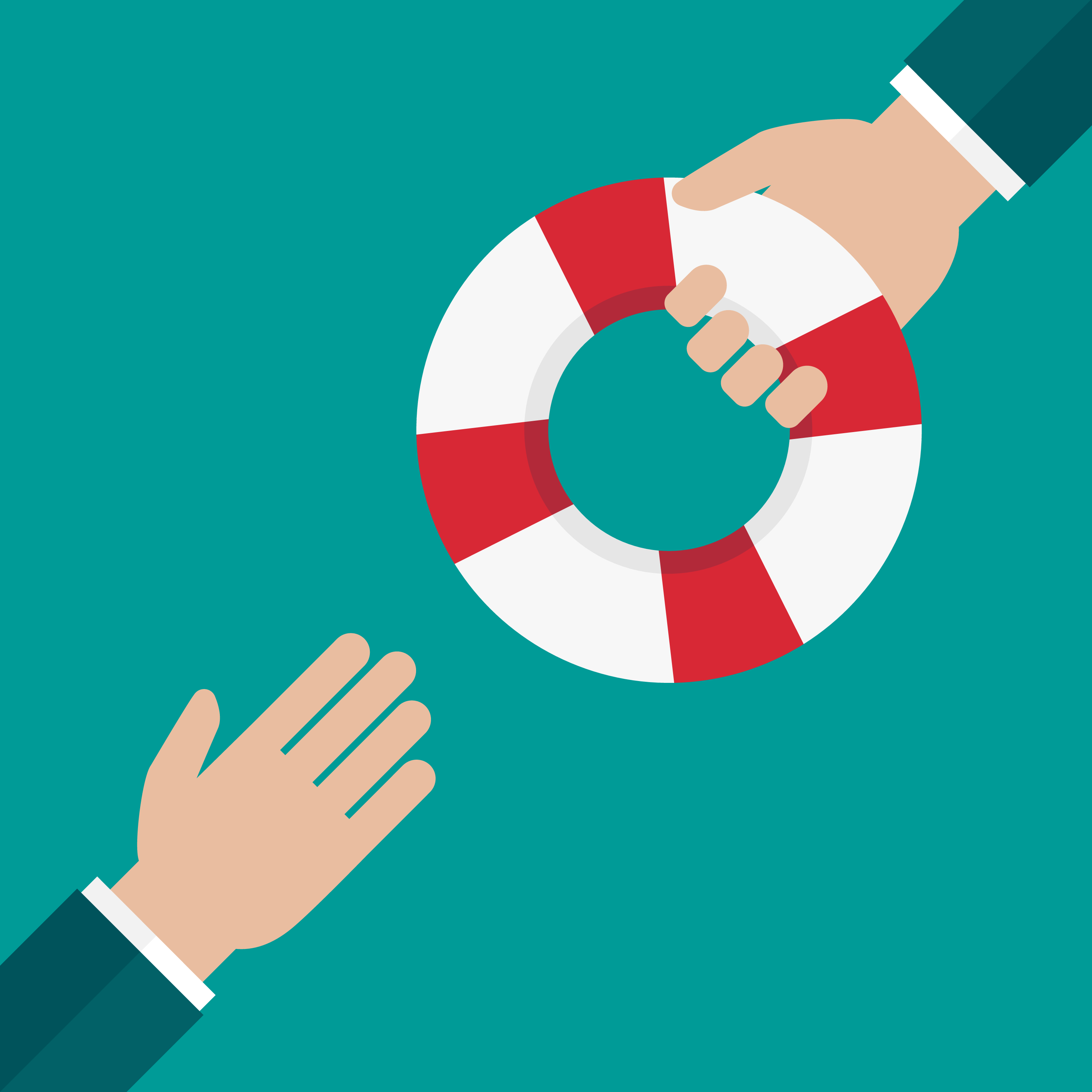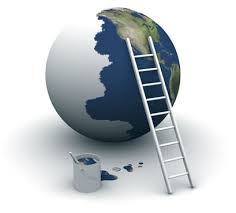Tourism after COVID-19: Dodo or Phoenix?

28th April 2020
Tom Buncle, Yellow Railroad, has written a second in a series of blogs about the future of tourism following coronavirus. It is well worth a read.
Many consider prediction strictly ‘for the birds’…….but which bird? After this virus is over, will tourism die a death like the dodo? Or will it be reborn like a phoenix in a form we can’t even contemplate at the moment? As ever, the answer probably lies somewhere in between these two extremes. But it does seem we are in the midst of structural change, not just a temporary suspension of business as normal.
-
The Big Picture
Bird’s Eye View
“When will travel return to normal?” was the question on everyone’s lips in the early days as the C-virus started to close places down. It won’t. So now the question is “what will the world look like after we come out of this?” No-one knows. But that hasn’t stopped an army of commentators, rightly and helpfully, filling screens with speculation every day. 
Rather than indulge in yet more crystal ball-gazing about the precise shape of a ‘new normal’ world, this blog takes a bird’s eye view of a possible future. It tries to pinpoint emerging factors that may influence changes in the way we travel, why we might travel, and where we might travel in a different world post-COVID-19.
It splits these possible changes into three stages: short, medium, and longer term. In previous crisis scenarios this might have been viewed as the ‘recovery period’. Given the profound impact this virus is likely to have, in terms of altered priorities and behavioural change, talk of ‘recovery’ misses the point. It would be more appropriate to think of it as a brave new world, in which past trends offer little guidance to future direction.
As with all future imaginings, these thoughts come with a massive health warning. We cannot know what the future will look like. But, by focusing on emerging drivers of change, hopefully this might unearth some clues, which can offer a basis for tourism destinations and businesses eventually to start planning for a new future, as the smoke begins to clear.
Seismic Uncertainty
The frequency with which the current situation has been described as unprecedented is unprecedented. The current crisis is different from any other crisis we have known. Its trajectory will be very different from SARS, MERS et al, largely because of sheer scale and the number of people it has touched globally. The OECDforecasts the tourism sector worldwide could face an output decrease as high as 70%. And, according to UNWTO, 96% of destinations worldwide have imposed COVID-19 travel restrictions.
Unlike other crises, such as terrorist attacks and natural disasters, this is not a crisis that happens merely on one day, somewhere else, and to other people. No-one can think “this can’t affect me”. The risk is universal. It is likely to last much longer than any crisis generations alive today have ever known (the 1918 ‘Spanish flu’ pandemic lasted for almost three years after the First World War) and leave no country untouched. But, perhaps more importantly and because its impact will have become deeply embedded in the psyche of a generation worldwide, its legacy is likely to have a considerably greater impact in changing people’s behaviour for years after it is over.
When Can We Get Out of Here?
The holy grail of a return to travel depends on exiting our current, government-imposed social limbo. Epidemiological and political opinion suggests this will come from a mix of testing, tracing, and isolating the vulnerable, plus vaccination. But the prospect of vaccination, even in countries that can afford to immunise their populations, is perhaps up to two years away: at least a year to develop a vaccine, followed by trials, manufacturing at scale, and then widespread vaccination. Even then, many countries will be unable to afford to vaccinate their populations, meaning not only that they will remain potential sources of repeated outbreaks, but also that their prospects of attracting visitors will remain low as long as such health risks continue.
The implications for global travel are obvious. Those countries with more fragile economies and less robust healthcare systems will, sadly, suffer more and take much longer to rejuvenate their tourism economies than those that can demonstrate a significant degree of health security. International aid may well be focused on helping to vaccinate such populations. But the familiar problems of limited resources, bureaucratic complexity, and cultural suspicion in potential beneficiary countries may be compounded by reduced economic capacity and waning political will in donor countries to invest in external aid, and a possible increase in civil unrest in some recipient countries as a result of accelerated poverty triggered by the C-virus. And, as long as pockets of the virus remain in any one country, the prospect of global re-infection remains. Our world truly is only as strong as its weakest link.
Tourism’s Internal Contradiction
Tourism, which has consistently been one of the most resilient economic sectors and fastest to recover after crisis, largely because of people’s unquenchable desire to travel, is now likely, for the first time in several generations, to take its place at the back of the recovery queue, simply because this insatiable appetite for travel will be tempered by health concerns to an unforeseen extent – health concerns that arise from the fundamental essence of tourism: the movement of people.
Any economic activity that requires people to move to create value, or depends on proximity between people for trade, will have to change radically. Proximity has been not only unavoidable as part of the travelling process – crowded planes, trains, coaches, theatres, cinemas, restaurants, visitor attractions, festivals et al; it has also been a significant motivator of travel, as in the desire to experience other cultures, meet new people, and seek immersion in others’ ways of life. The desire to repeat these experiences may remain, but a reluctance to accept the cheek-by-jowl conditions of the past to access them may trump such desire.
We may see an inverse relationship develop between distance and desire: the further away, the less appealing; and the closer to home, the greater the familiarity, sense of security and willingness to visit, at least in the short-medium-term. This is likely to have significant implications for how people travel, where they travel, what they do when they travel, and, consequently, the cost of travel.
Keep Your Distance
A Finnish friend of mine joked that ‘social distancing’ was not a problem for her, because Finns already have a generous concept of personal space. We may find ourselves veering more towards a Finnish than, say, Italian form of social interaction for longer than we might imagine. ‘Social distancing’ is likely to remain a priority for some time – at least until widespread vaccination is achieved and, quite possibly, for some time afterwards, as the psychological memory of the fear of infection remains.
However, the economic implications of this could be considerable: airlines, led by Easyjet, Wizz, American and Delta are talking of ‘dedensification’ – keeping middle seats on planes unoccupied – which will inevitably cause airfares to rise; restaurants may have to increase space between tables, which risks their very viability; the logistics of moving people around, when they resist being packed together like sardines to see the Sistine Chapel or catch the next city tour, will reduce the throughput of visitors per day/tour and, consequently, require higher prices to be sustainable.
Cost Implications
So, will international travel return to the 1950s model, and only be available to the rich?
Hopefully not, but possibly more than the era of ‘no-frills’ airlines, AirBnB, and intense competition in recent years have led us to expect. A likely increase in the cost of travel, higher travel insurance costs, less disposable income amongst populations with more people unemployed, enduring health concerns, and a likely reorientation of values, where time spent with family and friends assumes a greater importance, not to mention a potentially substantial reduction in the number of surviving tourism businesses, all point to the possibility of international travel being considered, if not a luxury, a rarer discretionary purchase than has been the case during the boom years of the last couple of decades.
So, pending an effective global vaccination programme, what might we expect, and when?
-
The Short-Term View – to End 2020: Business Survival
The focus over the immediate future has to be on business survival.  This period will determine how much tourism infrastructure and business capacity remains for the medium-longer-term. It is likely to be characterised initially by lockdown, followed by a gradual resurgence of various types of economic activity as lockdown restrictions are eased at different rates in different places for people with different risk profiles.
This period will determine how much tourism infrastructure and business capacity remains for the medium-longer-term. It is likely to be characterised initially by lockdown, followed by a gradual resurgence of various types of economic activity as lockdown restrictions are eased at different rates in different places for people with different risk profiles.
The survival of tourism businesses during these first few months will depend largely on government support, as there will be limited revenue opportunities, with people initially unable, and later probably unwilling, to move far beyond their homes to spend money.
Supply Side Impact
There is much political debate during our lockdown about whether and how long health should be prioritised over the economy. But wise heads are increasingly suggesting this is not an either-or choice. Health and the economy are inextricably intertwined. The more we risk people’s health, the more we jeopardise the economy – hence a health-driven approach not just to save lives, but also to protect the future economy. As a public health professor astutely observed recently on BBC Newsnight, “dead people don’t contribute to the economy”.
In the absence of widespread testing and vaccination, it is therefore likely that lockdown will continue in the UK for considerably longer than a few weeks, at least for those considered vulnerable (older people and people with health problems). This represents a sizable slice of those with the money and time to travel. The challenge for tourism businesses will be to survive this period.
Governments in many countries have stepped in with a range of supporting measures only seen in recent memory in communist countries, with the aim of helping businesses to remain solvent, so the economy can be restarted quickly when the time is right. The balance between financial support, fiscal relief, and business advice has varied between countries, largely according to their economic capacity, political ideology, and business understanding. (Failte Ireland has been exemplary in this regard, in terms of the speed and quality of its highly practical advice for the tourism industry.)
In the UK, tax holidays, debt deferrals, financial support, and business advice have been focused on sustaining businesses through the first four months – to end June. Whether such support can be maintained beyond this period is unclear. If not, we can expect a significant number of businesses to be unable to survive the next six months. In the absence of such support elsewhere, which many countries simply cannot afford, we are likely to see a considerable reduction in tourism-receiving capacity worldwide.
Demand Side Drivers: Visitor Motivation
Relying on historic data to predict future travel behaviour has probably never been so futile. The paradigm has shifted; the rug of confidence has been pulled from under previously intrepid travellers’ feet. Yesterday’s travel desires have been overtaken by anxiety, caution, and new factors in the holiday-decision-making process, particularly health concerns, with 1 in 4 Brits saying they won’t feel comfortable planning an overseas holiday until a vaccine against Coronavirus is available, and 21% feeling similarly reluctant to book a UK holiday.
New behaviours are emerging. There is even evidence emerging in the USA of a switch towards saving amongst millennials – the generation who blew their pay cheque more than any other on impulsive fun, particularly eating out and travel. A similar reorientation of values is likely to find its expression in travel, whereby spending time with family and friends assumes a greater importance, as happened after the 9/11 terrorist attacks.
But will these new influences on behaviour last? Or will they be no more than a fleeting reaction to anxious times? Will people revert to more hedonistic motivations for travel – to explore new places and escape their frenetic business lives to recharge their emotional batteries, as before?
The answer probably is that anxiety may not last in its raw form, in that it will no longer stop tourism dead in its tracks, after a vaccine has been developed. But its impact, in changing the way people think about travel safety and, therefore, which destinations make it on to their holiday shortlist, is likely to endure. Just as an increase in saving as a reaction to the threat of reduced income and unemployment during the early stages of the C-virus might represent a longer-term change in younger people’s economic behaviour, so might health and safety concerns remain embedded in people’s travel decision-making for the foreseeable future, particularly if the virus has not been eradicated worldwide.
International versus Domestic Travel
It seems unlikely there will be much movement, at least in terms of international leisure travel before 2021. As far as international travel is concerned, 2020 increasingly looks like being a write-off. Australiais talking of banning outbound travel until 2021; and the European Commission President is urging senior citizens and people with health problems to stay home until the end of the year. From an inbound perspective, it is interesting to see destinations beginning to discriminate against travellers from certain markets, based on their perception of how these countries have handled the health crisis at home, and consequently the risk they pose to their intended destinations. Based, apparently, on their view of how long it took certain governments to introduce measures to restrict the spread of coronavirus, the Balearic Islands have banned one of their largest markets, Brits, for this summer. Restricting free movement of its citizens and refusals of refunds by tour operators may be in breach of EU law, but this crisis seems to be rewriting the rule books – retrospectively.
But, more importantly, the ‘get-out-of-jail-card’ of mass vaccination, which could open the floodgates of international travel again, is still likely to be some way off as this year ends.
Some domestic travel might pick up in the autumn, if lockdown and other travel restrictions are eased. But medical opinion indicates a possible series of ‘w’ waves whereby, as restrictions are eased, the virus spikes again, resulting in a temporary return to lockdown restrictions, with this see-saw trajectory being repeated until such time as the virus has burnt itself out (unlikely) or, more realistically, mass vaccination has been completed.
If this ‘w’ wave scenario transpires, the question arises whether we will see a modest return to domestic travel in the intervening dips as pent-up demand is released, or whether people will remain too nervous to move in light of continuing uncertainty. It seems likely that, if people do move in these periods between lockdown and release, most trips will be day trips, rather than overnights.
New Business Models
Two issues are paramount for businesses and destinations in the short-term: cash flow and preparedness. Cash flow must be the obsessive focus of every business to get through the next few months. The next priority must be to ensure they are fit to re-emerge as soon as the opportunity arises.
Fortunately, people are immensely creative, especially in adversity. There are many examples around the world of innovative attempts to stimulate cash flow, through adoption of new, even if temporary and largely virtual, business models to generate revenue during the travel embargo.
Dutch tour operator WithLocals is offering a range of online virtual city tours for sale – from an evening tour of Prague’s hotspots for $36 per person to a Bangkok walking tour. They are also selling online educational experiences, such as interior design in Barcelona to the origins of democracy in Athens, where you learn to ‘debate like Socrates’. Untapped New York Insiders is offering a range of membership options ($10-$25 per month), which offer members different types of online tours revealing New York’s hidden secrets and off-limits places. Other places are offering experiences from online cookery classes to language and fitness classes.
With around half the world’s aircraft fleet grounded and large swathes of the world on lockdown, no-one is going anywhere far anytime soon. Nevertheless, destinations are aware of the need to remain top of mind for the bounce-back, or at least when the opportunity to travel re-emerges. To this end, several destinations have produced beautiful, sensitive, ‘non-promotional’ videos, ostensibly urging people to stay home, but subtly reminding them that they will be there for them once they can travel again. Majoring on the natural environment, tranquillity and space, some of the most evocative have come from, Namibia, Scotland, and, perhaps surprisingly, the city of Auckland. Tour operator &Beyondhas gone a step further by streaming 3-hour, live wildlife safaris, in which viewers can ask questions about what they’re seeing in real time.
-
The Medium-Term View – 2021: Re-Emergence
Testing Is Key
The IMFis already calling this the greatest economic downturn since the Great Depression (1929-1933). Global ‘growth’ is predicted to fall by -3%, with a cumulative loss to global GDP over 2020 and 2021 of around 9 trillion dollars, greater than the economies of Japan and Germany combined. The collapse of businesses is depressingly inherent in these figures; but the removal of so much discretionary spend from the economy through unemployment is the other side of this story. The fewer people with disposable income to spend, the slower economic recovery will be, not least in the tourism sector.
Global ‘growth’ is predicted to fall by -3%, with a cumulative loss to global GDP over 2020 and 2021 of around 9 trillion dollars, greater than the economies of Japan and Germany combined. The collapse of businesses is depressingly inherent in these figures; but the removal of so much discretionary spend from the economy through unemployment is the other side of this story. The fewer people with disposable income to spend, the slower economic recovery will be, not least in the tourism sector.
While a vaccine remains unlikely until well into 2021 at the earliest, the prospect of testing, tracing and isolating the vulnerable should enable those who have tested negative or are believed to have had the virus (but still with no guarantee of immunity from further infection) to resume an economically active role. This is when we should see those businesses that have survived begin sprouting back to life.
Hopefully this will start happening before the end of this year, if sufficiently widespread testing can be achieved. As next year progresses the hope must be that anxiety gradually gives way to confidence and people start thinking about travelling again.
Steady As She Goes
What form might such a tentative return to travelling take? Some international tour operators are reporting bookings for 2021 already. Whether this is the tip of an iceberg of pent-up demand or merely a few enthusiastic early bookers is unclear. The majority of trips, at least in the first half of next year, will probably be largely domestic and to destinations relatively close to home (e.g. Europe for UK travellers), with an emphasis on those countries perceived to be safest.
Social distancing is likely to remain an issue. So, places with plenty space are likely to be favoured over crowded places: the natural environment rather than city breaks; the great outdoors rather than indoor attractions; self-catering rather than hotels, which involves less exposure to strangers; and, probably, greater reliance on the car as a means of transport in which people can isolate themselves more than on public transport, trains, planes or buses. A preference for the car may be another factor influencing trips to nearer destinations, rather than those further afield that can only be reached by flying.
Nevertheless, more resilient, and predominantly younger travellers will, as ever, probably be the first to return to remoter and more adventurous destinations, but only very gradually and in limited numbers.
We may also see an acceleration of the recent trend amongst millennials, whereby they want to feel their major purchases are contributing to the greater good (e.g. environmental conservation, community livelihoods etc.). This may even provide a ‘justification’ for travel in hard times: “It’s not just for me. What I spent on my holiday benefitted others, who would have been worse off if I hadn’t gone”. ‘Indulgence guilt’, which often finds its expression in ‘vacation hesitation’ after natural disasters, is occasionally assuaged by understanding that holidaying in a disaster zone can sometimes be the best thing to do for the benighted local population. ‘Indulgence guilt’ was a significant disincentive to travel to Sri Lanka in particular after the 2004 tsunami. A clear official statement from Sri Lanka that visitors would not just be welcome, but were actively encouraged to come as they would be contributing to the country’s economic regeneration, helped overcome such traveller concerns.
Reassurance Requires Redesigned Systems
Apart from the issue of restoring traveller confidence, a reboot of the tourism industry will be required – both strategically and technically – which will not happen overnight. Mothballed planes will need to be checked and tested, furloughed staff may need retraining, and communications campaigns will need to be mounted to let people know what’s open, where and how safe it is. Parts of the entire tourism infrastructure will need to be redesigned for a post-social-distancing world– from visitor flows, spacing, and hygiene in airports and hotels to aircraft, trains, coaches, cruise ships and public transport.
Emirates has already started testing passengers for COVID-19 before boarding and requiring them to wear face masks and gloves throughout the flight. It will be important to agree requirements for any such hygiene checks and apply them consistently. If they are not standardised worldwide, chaos is likely to ensue as some countries refuse entry to passengers, while others permit them.
At the level of customer reassurance, we are likely to see many places introducing hygiene certification – aimed at customers, rather than a behind-the-scenes requirement by health inspectors. Singapore has already introduced an independently assessed “SG Clean” stamp for hotels, which will be mounted as prominently in each property as its star grading endorsement. AccorHotels are introducing a similar hygiene reassurance scheme.
We can expect many more businesses and destinations to follow suit with ‘clean’ label certification. Will they be effective? Probably - at least as a reassurance measure. A different order of magnitude, but it is worth reflecting on the success of the introduction of simple hand sanitisation measures on Nile cruise boats several years ago, which immediately reduced the incidence of stomach bugs and restored a market that had been devastated by this.
-
The Long-Term View – Beyond 2021: The New Normal
Vaccination: The Pot at the End of the Rainbow
Mass vaccination is base camp; it won’t represent the end of the climb, but the start of the final ascent:  the watershed between hesitancy and the confidence to travel again, even if traveller confidence might still lag behind the extent of vaccination. Right now, this looks unlikely to happen before the second half of 2021, and it may not be widely implemented until early-mid 2022.
the watershed between hesitancy and the confidence to travel again, even if traveller confidence might still lag behind the extent of vaccination. Right now, this looks unlikely to happen before the second half of 2021, and it may not be widely implemented until early-mid 2022.
Even then, it is unlikely vaccination will be widespread in poorer countries, leaving open the possibility of reinfection. This will remain the biggest question mark – the global extent of vaccination, which will determine whether the C-virus has been eradicated worldwide and what level of risk remains. This also raises the question whether testing might be introduced for returning travellers, if there is still a residual risk in certain countries.
This means a significant return to international travel will be unlikely before the 2022 season, as tour operators will be unable to commit to programmes and prices with any degree of certainty. In their absence, we might see continued growth in independent travel by more adventurous travellers, keen to travel and not dependent on tour operators. And this raises another question: might governments ban travel to countries where the C-virus has not been eradicated, to stop travellers bringing it back home again? Clearly, international cooperation, in the form of common standards for C-virus-related entry requirements, and a massive effort to eradicate the virus through global vaccination, will be required to get the whole world travelling again.
Variable Returns
A return to travelling will not only vary from country to country, with domestic and local-regional travel returning faster; but it will also return at varying speeds to different sectors. Cruise companies are predicting 3-5 years for a return to a “really healthy cruise industry”. But whether they will return to 2019 levels is a moot point, given the unavoidable proximity to other passengers, recent alarming press imagery of cruise ships as floating petri-dishes – from Norovirus to Coronavirus; and their environmental impact – from carbon emissions to daily, local ‘overtourism’ surges, as they disgorge large numbers of low-spending visitors in destinations where such volume in such a short time is unsustainable. But cruise passengers are nothing if not loyal. So, any change will be more likely to be brought about by international (pollution) and local (‘overtourism’) regulations than passenger pressure.
Supply Chain Repatriation
International trade will continue to thrive. But we may see a move towards repatriation of certain critical supply chains, as people seek to source their basic needs closer to home, such as local food supplies, and nations attempt to reduce their dependence on international markets. Shortcomings revealed during the pandemic, most especially limited supplies of critical medical protection equipment and ventilators, and the fear of food shortages, will likely lead to an escalation in the manufacture of essential items at home and efforts to enhance food security.
I Can See Your Cat
From a tourism perspective, perhaps the greatest change will be a reduction in business travel. (See March Yellow Railroad blog.)
Having come to rely on online channels during lockdown, we are likely to be converted. Online will grow its share of the business meetings and entertainment sector, and become ingrained as the ‘go-to’ and cost-effective choice, particularly for meetings, from now on. We may be surprised to discover how much business travel was really discretionary rather than essential – to the delight of many chief financial officers. Conference call apps such as Zoom and online entertainment channels such as Netflix will be major beneficiaries; airlines, hotels and cinemas will be the losers in the short-medium term. Nevertheless, there will still be a demand for social contact, even at a distance, in the form of some face-to-face meetings, conferences, and big screen drama, although, on average, Brits don’t expect to be able to visit a cinema or gym before September.
There is also a possibility of change in the property market. Many people who don’t need to be physically present to carry out their jobs have found it easy and productive to work from home and businesses have begun to realise they don’t need to pay for so much office space. Might we see a contraction of office requirements and the release of office space, particularly in city centres for other uses, such as much-needed housing?
Similarly, the convenience and avoidance of unnecessary social proximity afforded by online shopping will increase the fortunes of companies from Amazon to local veg box deliveries, but at the expense of local on-street retailers. This is not to suggest the death knoll for local retailers. There will be a countervailing move to support local businesses. But they will probably have to provide a much more differentiated service than before, aimed at specific markets and with real local flavour, to attract shoppers through their doors in viable numbers.
-
Conclusion
Light at the End of the Tunnel
These are grim times. But there is light at the end of the tunnel. People will still want to travel, but differently. As in any upheaval, there will be winners and losers. The trajectory of recovery will be different, and slower, than any post-crisis recovery in living memory, simply because this has affected everyone in every country worldwide, at least psychologically if not physically. No-one is immune, either geographically or demographically.  And ‘recovery’ means a new normal, not a return to the way things were before.
And ‘recovery’ means a new normal, not a return to the way things were before.
Travel Resumption Depends on Medical Advance
Resumption of travel will depend on medical advances and their speed of implementation. Widespread testing will be the first step towards a regeneration of local economic activity, with mass vaccination being the holy grail that will, eventually, give people the confidence to travel further afield; and mandatory vaccination certificates will provide the reassurance countries need to admit visitors.
Variable Speed Recovery
But countries will recover at variable speeds. As long as the virus persists, even in isolated geographical pockets, and the prospect of resurgence or mutation remains, caution will play a significant role in the choice of destinations people visit, the type of tourism products they buy, and the experiences they participate in.
A return to travel will be driven initially by domestic day trips, followed by overnight and longer visits to places closer to home that are relatively familiar, where people feel safer. Long-haul travel, particularly to countries with weaker economies and, consequently, less robust healthcare systems, will take longer to recover. People’s perceptions of their health and hygiene structures will be key for these destinations. This is where politics, economics and health meet to influence trust: travellers’ perceptions will be formed partly by the way destinations handled the C-virus, in terms of both medical efficiency and public transparency, and partly by the quality of health and hygiene regimes in place. National credibility will be as important, if not more so, than destination appeal.
The Long View
Even if international travel were to return to 2019 levels, this is unlikely to be before 2023, at the soonest. Whether this volume is desirable, or even likely in view of a potentially renewed awareness of the impact on climate change, is a subject for debate.
Those destinations and tourism businesses that can address travellers’ anxieties, while still communicating their inherent appeals, will stand the best chance of faster business rejuvenation. As the world eventually starts travelling again (post-vaccination), the level of anxiety will subside; but its legacy is likely to remain in the form of caution embedded as an influence on destination choice and type of holiday for some time to come. Destination reputations will have been undone and reformed during this crisis. This will affect their fortunes for years to come. Consequently, demonstrating healthcare capacity will, for some destinations, become an important element of their tourism marketing.
Addressing these visitor concerns will inevitably lead to higher prices, as people demand more space and safety reassurance, thereby increasing costs and reducing visitor throughput over time for businesses. It will also add to the bureaucracy of travel, as countries introduce vaccination certification as an entry requirement plus, possibly, the reintroduction of visas for citizens of countries who previously travelled visa-free.
However, given the recent increase in seasonal ‘overtourism’ in many places, this may be just what the destination doctor ordered – a price-driven rebalancing, whereby numbers revert to sustainable levels, enabling visitors to experience the essence of what made these places so appealing in the first place. Certainly, there is already evidence of environmental regeneration and wildlife returning to places they haven’t been seen for years, in the absence of people. Maybe we are learning the lesson that the natural environment is not a free good and that its long-term sustainability needs to be paid for. And maybe people will be willing to pay a bit more for a genuinely fulfilling experience, albeit less frequently, in the shape of fewer, but better holiday breaks per year. There may be no alternative.
Increased costs and reduced availability of low fares from no-frills airlines will reverse the recent expansion in the democratisation of travel. This will have an impact on people’s ability to travel overseas, particularly for those on lower incomes. But the other side of this coin is an opportunity for the growth of domestic travel and new types of tourism experience emerging at home – a partial repatriation of the holiday supply chain and a growth in appreciation of what our own countries have to offer.
An alternative scenario, however, could envisage the very opposite: low oil prices, an oversupply of idle planes, and reduced rates from tourism operators to stimulate cash flow, could see a rash of affordable holidays flood the market to kick-start travel in 2021-2022. But this seems less likely, if only because such low prices are unlikely to remain sustainable in the face of a generally higher cost base, resulting from traveller demand for more personal space.
Maybe the experience of lockdown will have led us to appreciate the little things more and encourage us to stop and smell the roses on our doorstep when we do start travelling again. ‘Slow’ tourism might grow faster; exploring our local communities might unearth delights we never knew existed – as some have discovered on their daily, and very local, lockdown exercise routine.
Beyond Borders
That said, a clear lesson from this virus has been the extent to which we are globally interconnected. For the sake of countries further afield, whose economies have become increasingly dependent on tourism in recent years, we can only hope they will be able to address travellers’ anxieties and inspire the necessary level of confidence to encourage visitors to return.
For many, this will require support from outside and international aid agencies will need to recognise this. Otherwise a sharp reduction in tourism will hit their economies hard, not least in remoter rural areas where few other economic opportunities exist.
Tourism has contributed significantly towards poverty reduction in many developing countries. Reversing this progress will not only be soul-destroying for these countries, but it raises the risk of civil unrest as access to basic levels of sustenance becomes harder for many people. They deserve better. We are all part of that solution.
Tom Buncle April 2020

0 comments
Leave a comment